Gum Disease Treatment – Tulsa, OK
Give Your Teeth a Healthy Home
As we have learned more about oral health, we have a better understanding of the importance of oral hygiene, which includes routine professional cleanings and evaluations. Gum disease is a silent, progressive condition that millions of people unknowingly have. In fact, gum disease is the greatest cause of tooth loss in adults. Gum disease treatment in Tulsa, as well as the right prevention, can help save your teeth and oral health.
Why Choose Glisten Dental Care of Tulsa for Gum Disease Treatment?
- Comprehensive Scaling and Root Planing
- Safe & Highly Effective Laser Periodontal Therapy
- Targeted Antibiotic Therapy Available
Risks of Gum Disease
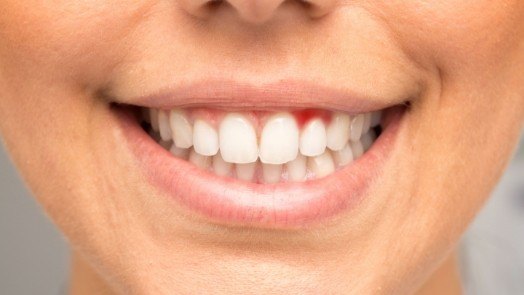
Those who smoke are at a higher risk of gum disease, as are women. Diabetics also need to be careful about gum health. Other factors that may affect the risk for gum disease include:
- Poor oral hygiene
- Poor health, persistent health conditions
- Genetics
- Certain medications
Although certain factors seem to have a direct impact on oral health, an imbalance in oral bacteria instigates inflammation and infection of gum tissue. The mouth is host to millions of bacteria, some good, and some bad. Shifts in hormones, poor oral hygiene, and other factors may throw off this balance and give harmful bacteria optimal conditions to thrive and damage teeth and gums. As bacteria produce waste, plaque may form and adhere to teeth. Bacteria live in this plaque, resulting in red, swollen gums, bad breath, or a bad taste in the mouth.
Gum Disease Prevention

Discovering and treating gum disease in its earliest form, which is gingivitis, is extremely beneficial. This is the only time when the condition can be reversed. In this stage of gum disease, the infection has affected gum tissue only. Teeth are still held firm within their sockets and bone has not been damaged.
Untreated gingivitis progresses to periodontitis, in which gum tissue begins to pull away from the teeth due to the presence of plaque beneath the gumline. This pulling away allows pockets to develop, in which debris collects. At this point, gum disease is no longer curable, but can be managed with adequate, ongoing care and excellent at-home oral hygiene.
Allowing gum disease to go untreated results in an immune response to fight the infection below the gumline. As the body fights the infection of periodontitis, toxic substances from bacteria break down the connective tissue and bone that keep teeth in place. Those with more advanced stages of gum disease may notice that teeth feel loose or begin to shift, affecting the bite.
Dr. Hammond takes a proactive approach to gum disease treatment and prevention, thoroughly assessing patients' gum tissue during routine dental exams. It is better to prevent gum disease than to fight it once it has developed. Contact us to schedule your examination with Dr. Hammond.
If you've already begun losing teeth as a result of gum disease, Dr. Hammond can replace them using dental implants.
Early Gum Disease Treatment
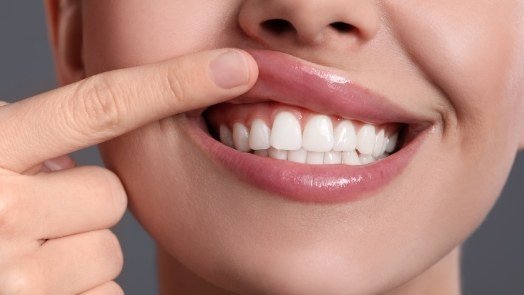
The idea of gum disease, for many, is far off. This is ironic, considering that fifty percent of adults in America have some form of this potentially serious condition. Gum disease occurs in stages and is largely controllable with adequate oral hygiene. However, because this disease process has such subtle beginnings, many people leave gum disease untreated until problems become obvious. At Glisten Dental Care of Tulsa, Dr. Hammond and our skilled hygiene team are careful to check for gum disease during routine dental examinations.
What Is Gum Disease?
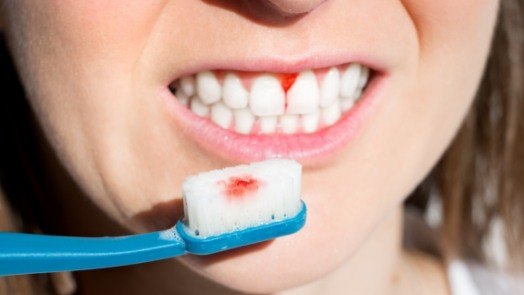
The mouth contains more than teeth, tongue, and gums. Every person has bacteria that naturally occur. Bacteria are living organisms that are nourished by sugary substances, of which tiny particles may be left behind after meals. In addition to feeding on sugars, bacteria also combine with these substances, along with saliva, and they become stuck to tooth surfaces in what we call plaque. As plaque collects around the gumline, gingivitis develops. This condition tends to affect gum tissue only, causing inflammation. The signs, including redness or minimal bleeding during brushing, are so easily explained away that many people fail to get the treatment early on.
Periodontitis
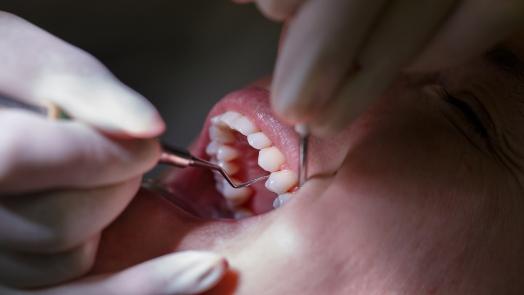
Untreated gingivitis progresses to periodontitis, a condition affecting deeper parts of the gums, and threatening bone tissue. Once periodontitis has set in, pockets begin to form around affected teeth, giving bacteria more places in which to settle. Early recognition of gum disease, before pockets form and tissue has begun to deteriorate, is vitally important to the elimination of gum disease. This condition, as it progresses, poses a threat to the entire body.
Treating Gum Disease
The goal of gum disease treatment is to get the infection under control. We know that we cannot fully eliminate bacteria, as these microorganisms are naturally occurring in the body. In treating gum disease, we reduce bacterial activity and restore gum tissue to a healthier, more resistant state. Gum disease is a condition treated based on severity. Ideally, regular dental visits are maintained. This allows us to combat gum disease through preventative measures, avoiding invasive treatments. When early signs of gum disease are detected, your dentist and hygienist can discuss hygiene measures to reverse the effects of harmful bacteria. Often, professional cleanings at this stage will remove mild plaque and tartar, restoring optimal oral health.
Scaling & Root Planing
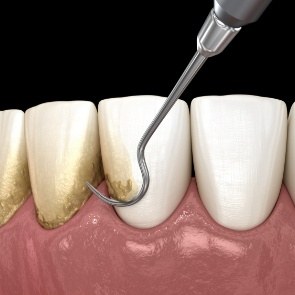
As gum disease progresses below the gumline, the pockets must be addressed to remove bacteria and restore the optimal connection between gum tissue and teeth. Scaling is the process by which plaque and tartar below the gumline are removed. Our hygienist provides gentle care and can perform the treatment after the gums have been numbed, similar to other dental treatments. Following the removal of harmful substances, the roots of affected teeth are smoothed in the root planing process.
Laser Gum Treatment
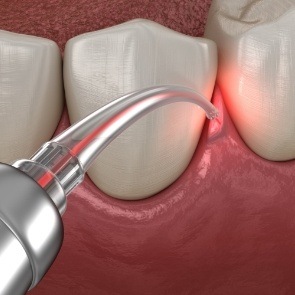
Rather than relying on traditional dental instruments to perform gum disease treatment, Dr. Hammond relies on soft tissue laser treatment to remove damaged and decayed gum tissue. This advanced device uses concentrated light beams to carefully remove small portions of gum tissue safely and conservatively. Not only does this ensure you keep as much of your healthy gum tissue as possible, but your aftercare becomes considerably more comfortable.
Antibiotic Therapy
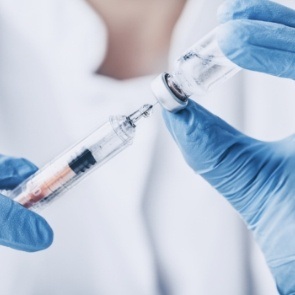
Following your gum disease treatment, Dr. Hammond wants to make sure that your gums are getting the attention they need outside of the office as well. This is where antibiotic therapy can make a big difference in the recovery process. By applying the Arestin antibiotics directly to the gum pockets and letting them slowly dissolve over time, we can reduce the risk of your gums becoming reinfected later. When you come back for a follow-up appointment, we’ll make sure the antibiotics are working as intended.
Gum Disease Prevention
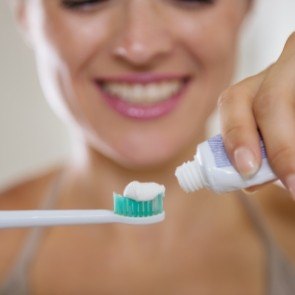
The Centers for Disease Control and Prevention (CDC), reports that about half of all Americans have some form of gum disease. This chronic inflammatory condition deteriorates gum tissue and the bones and ligaments that support teeth. Without treatment, gum disease leads to bad breath, discolored gums, tooth loss, and loss of facial structure. It is also associated with grave systemic disorders such as cardiovascular disease, diabetes, and Alzheimer’s disease. The good news is that residents of the Tulsa area can enjoy beautiful, healthy smiles with a simple gum disease prevention program.
Gum Disease Homecare

You play the biggest role in preventing gum disease, so the next step is showing you what to do after you leave our office. We’ll demonstrate the correct way to brush (after meals or at least twice a day), and floss before bedtime. A 60-second, twice-daily rinse with antiseptic mouthwash helps to reduce oral bacteria that cause gum disease. Remember, if you can’t brush right after eating, swish with plain water to flush out larger food particles and reduce acids. Chewing sugar-free gum with Xylitol helps too.
Gum Disease FAQs
Whether you’ve been told that you need gum disease treatment or not, you may be wondering what the signs or symptoms are that you should look for. You might also want to know if it can negatively affect your overall health and well-being. Fortunately, Dr. Hammond has taken the time to sit down and compile a list of gum disease FAQs to help you better understand this common, yet harmful dental condition. By providing helpful answers to these questions, you should have the right information to help you make the right choices when it comes to your oral health. If you do have additional questions, please don’t hesitate to contact us.
What are the symptoms of gum disease?
There are many ways to tell if you are experiencing gum disease. Although millions of people in the United States are living with some form of gum disease and may now know it, there are ways to tell. Some of the signs include:
- Red, inflamed gums
- Bleeding gums
- Bad breath
- Gum pocket formations
- Loose teeth
- A change in your bite
- Receding gums
- Pimple-like sores that develop near the infected area
What are the dangers of gum disease?
If gum disease is left untreated, it is not only your oral health that will be jeopardized. Your overall health and well-being will also be negatively impacted. Once the infection is deep enough in your gum pockets, it can enter your bloodstream and travel to various parts of your body and result in the formation of health conditions, such as:
- Heart attack
- Stroke
- Diabetes
- High blood pressure
- Alzheimer’s or Dementia
- Certain types of cancer
- Pregnancy complications
Will gum disease treatment hurt?
Before Dr. Hammond begins the process of administering a deep cleaning, otherwise known as scaling and root planing, she will numb your gums to prevent any pain or discomfort during the treatment. It is not uncommon to experience some soreness or tenderness after these visits, so the use of a cold compress or over-the-counter pain reliever can help alleviate some of the discomfort you may experience.
What happens if my teeth can't be saved with gum disease treatment?
If gum disease has progressed to a point in which your teeth can no longer be saved, Dr. Hammond will begin discussions on how best to replace them. Missing teeth can cause a wide range of problems if not treated in a timely manner. If she determines that your natural teeth need to be removed as a result of gum disease, it will be necessary to allow for proper healing and recovery time before moving forward with any type of tooth replacement (i.e., dental bridge, dental implants, dentures, partial dentures, etc.).
Will my dental insurance cover gum disease treatment?
Most dental insurance companies will agree to cover gum disease treatment. Whether it is classified as a minor or major restorative service is up to the individual insurance company, so the amount of coverage will be determined by your insurer. When learning you will need gum disease treatment, make sure to speak to an insurance representative to better understand how much your out-of-pocket expenses will be. If you are unsure what to ask or how you will be able to pay for your treatment, don’t hesitate in talking to one of our highly trained staff members who can assist in working on your behalf with the insurance company as well as providing additional solutions to help you manage your payments.
I Need a Dentist for My Family I Need a Checkup & Cleaning I Have a Cavity or Broken Tooth I am Missing One or More Teeth I Want to Enhance My Smile I Want a Straighter Smile I am in Pain & Need Help I Have Pain in My Jaw I Need a Dentist for My Child I am Scared of the Dentist View Our Services
